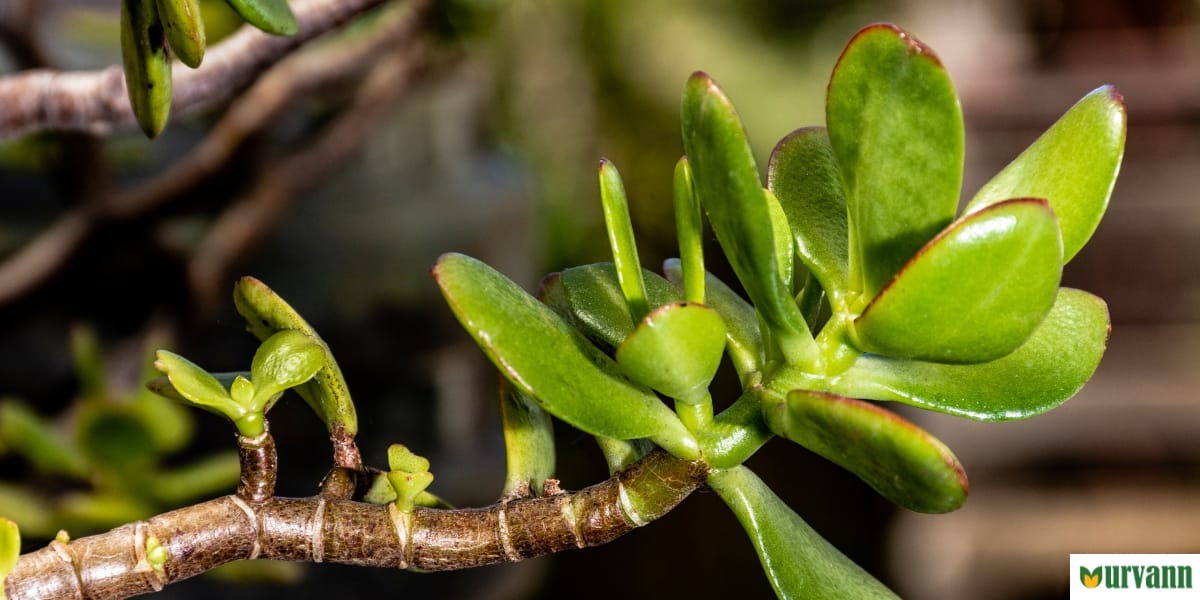The jade plant is a popular succulent houseplant that requires little indoor maintenance and can live up to 70 years with proper care. This plant grows slowly, adding only about two inches yearly, although it can reach a maximum height of three to six feet. It is a beautiful plant with small glossy leaves that will give your house a lush experience.
CARING TIPS FOR JADE PLANT
Caring for a jade plant is simple as long as you understand its fundamental requirements for soil, water, and sunlight. The following are the main care requirements for cultivating a jade plant:
- Plant in loose, well-drained soil. A succulent potting mix is the greatest choice.
- Place in a bright window that receives direct light; a south- or west-facing window is ideal.
- Water the plant frequently over the spring and summer to keep the soil moist, but not waterlogged. In the winter, water only once a month.
- To stimulate strong development during the growing season, apply a 20-20-20 fertilizer.
Here are four things that you need to take care of while growing your Jade Plant primarily
Light
Giving your Jade plant adequate lighting is crucial for its growth,
- Jade plants require a lot of light—at least six hours of bright direct sunlight per day, to grow well.
- However, too little light can also cause issues. In low-light settings, the jade plant's growth becomes lanky, causing it to weaken and tip over rather than retain a full, bushy appearance.
- The appearance of a red tinge along the edges of your jade plant's oval-shaped leaves indicates that it is getting enough light. This pink hue develops when the plant receives enough sunshine to grow.
Soil
The Jade plant does not have any specific soil needs,
- When selecting a potting mix for your jade plant, a succulent-specific blend is the best option. Compared to all-purpose potting soil, succulent potting soil is looser to allow for better drainage and reduce moisture retention, which can lead to fungal growth.
- A jade plant's optimum potting soil is a combination of sand, potting soil, and perlite.
- Another way to avoid moisture retention is to use a terracotta or clay pot, as these materials easily absorb water from the soil.
Water
The watering requirements of a jade plant change throughout the year.
It is critical to pay attention to the plant's demands, as overwatering is one of the quickest ways to destroy a succulent. Overwatering the succulent introduces more water into the root environment than the plant can manage, providing ideal circumstances for root rot.
- Water the plant more regularly in the summer due to greater plant activity and higher temperatures.
- Keep the soil slightly damp but not wet or saturated.
- Water again when the soil begins to dry; it is not necessary to let the soil become completely dry.
- When the plant is dormant in the winter, you should only water it once a month.
- You can water the jade plant from the bottom by placing it in a saucer of water.
However, you should drain any surplus water after a few minutes. Never allow a jade plant to sit in water.
Temperature and Humidity
Jade plants prefer average residential temperatures above 30 degrees. Jade plants may tolerate a lower atmosphere at night and in the winter, down to 12 degrees Celsius. Still, they should never be kept at temperatures below 10 degrees Celsius for an extended period.
- Choose an area with stable hot and dry temperatures when determining where to place your jade plant.
.
.If you follow these four simple steps, you can have your own Jade Plant haven at home. If you do it right, these plants require minimal maintenance and can thrive in your home without any hassle for a long time.


